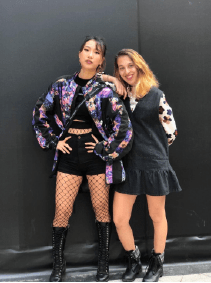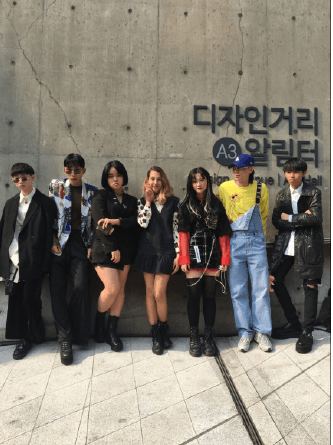Feminine Streetwear
In my experiences as a Yonsei student, feminine fashion appears to be largely homogenous. The beauty and fashion industries have done a good job of working with each other to reach at exploitable insecurities, such as not being feminine enough and not being beautiful enough. There is a high importance placed on how women present and whether it is considered to be feminine. This may be due to ongoing struggle within Korea to acknowledge styles and people outside of the gender binary. The idea of being feminine seems to be related to the way a person presents, the clothing choices that they make, and the level of effort that they put into their appearance. Women who do not wear well put-together outfits often get more stares, many of which seem critical.
There are a select few outfits that feminine people have to choose from, and on my walks to class and around Seoul, I don’t often see people diverge from these. The most common clothing trends are skinny jeans or pencil skirts paired with a distinctly feminine blouse, and shorts with stylized t-shirts. These options don’t leave much room for someone like me, who enjoys dressing in both feminine and androgynous clothing. To me, an outsider to the Korean culture, relying only on my experiences, it seems like Korean fashion puts femininity into a box that doesn’t allow for experimentation. I personally believe that fashion and clothing is a mark of individual expression, but I have been struggling to find evidence of that at Yonsei and in other areas around Seoul. I wondered if this restrictive fashion was specifically related to schoolgirl clothing, and thought that different avenues of fashion might open up possibilities of androgynous dress to me.
Thus I began to explore Korean streetwear, a place that I expected to have more freedom of expression and more clothing options that existed outside of the binary. When I went shopping at stores that were specifically for streetwear, however, the closest that I could find to an androgynous piece of clothing was a single jean jacket that did not have a feminine cut. There are plenty of Korean streetwear styles for women that appear feminine, but I found through shopping and exploring the streetwear in Korea that these items tended to be either: men’s clothing or men’s clothing made for women. For me, androgynous fashion has always been distinct from dressing in men’s clothing or wearing specifically masculine things. Feminine androgynous culture is a space of its own, a place to celebrate expression that is feminine, masculine, both, neither, and so much more at the same time. After speaking with some Korean students, it became apparent that the common conception of androgynous style for feminine people in Korea is wearing men’s clothing. This may be changing as conceptions around gender and fashion change within Korea, but from my experiences in Korea, I have found myself disappointed by the lack of options in androgynous clothing for feminine presenting people.
Related Posts
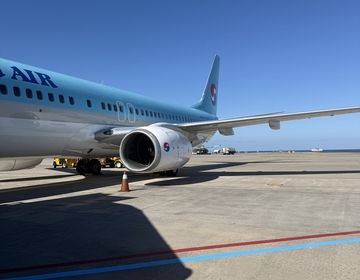
Soul Searching in Seoul: Everything I Learned and What I Wish I Knew
Before I start crafting my “study abroad changed me” answers for friends and family, here are the practical things I wish I’d known. The things that would’ve saved me time... keep reading
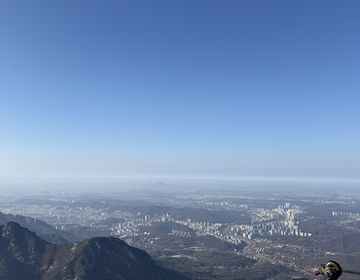
A Seoul Escape to Bukhansan
Get out of the hustle and bustle of Seoul and head to the peak of Bukhansan!
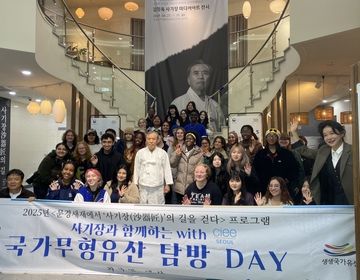
My Time in South Korea Attending Yonsei University: A Life-Changing Chapter
By: Zahrraa Al-Salman Studying abroad had always been a dream of mine—an opportunity to step outside of my comfort zone, immerse myself in a new culture, and deepen my understanding... keep reading
